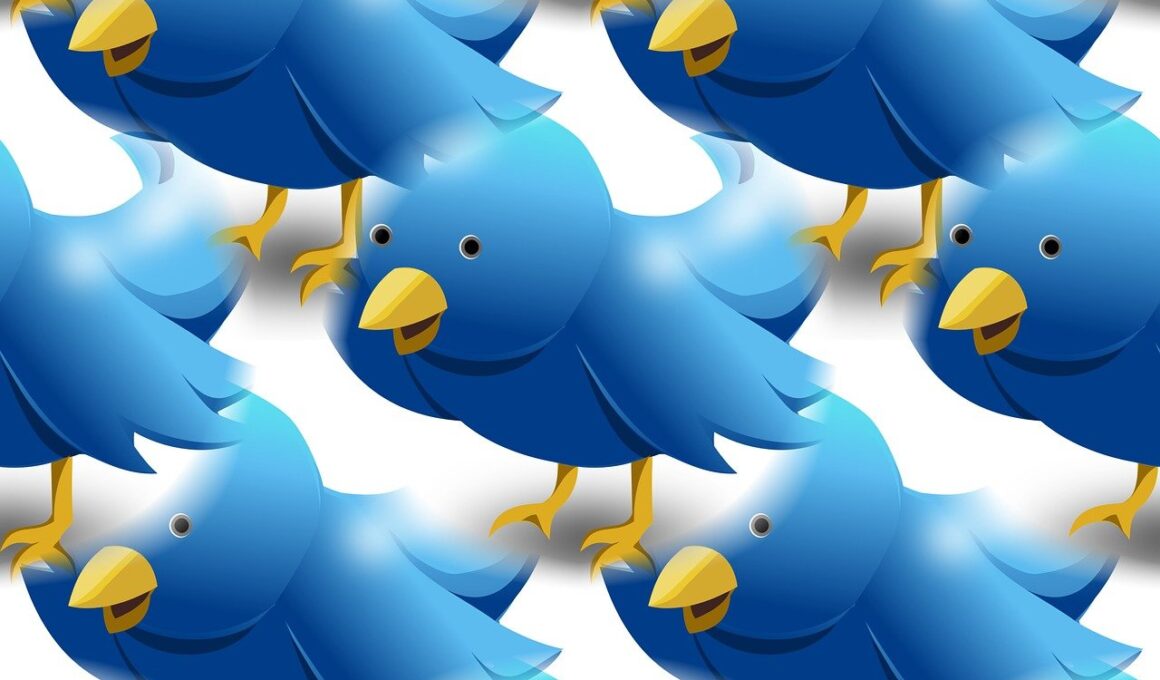Analyzing Click-Through Rates on Twitter to Enhance Traffic Generation
Understanding click-through rates (CTR) on Twitter is essential for marketers aiming to boost traffic generation. Recognizing how to effectively analyze CTR can help businesses tailor their strategies for better engagement. When brands comprehend the relationship between their tweets and the CTR metrics, they can adjust their content accordingly. Factors such as tweet timing, link placement, and hashtag usage significantly influence user interaction. Furthermore, utilizing tools such as Twitter Analytics can provide insights into user behavior, helping to refine these strategies. To begin, one should examine historical data to identify trends in user actions following different types of tweets. Comparing tweets with varying media formats, like images or videos, can unveil what captivates the audience. The goal is to foster engagement not just for visibility, but to convert that visibility into actual clicks on the links shared. Therefore, establishing a baseline CTR is crucial. Subsequently, brands can test various approaches, measuring results to determine effective practices. Ultimately, by systematically analyzing CTR, marketers can create a responsive digital marketing strategy that enhances overall traffic generation.
Key Metrics for Twitter CTR Analysis
When analyzing click-through rates on Twitter, focusing on key metrics is important to gain the proper insight. Key metrics may include impressions, engagement rate, and the overall CTR percentage. Impressions refer to how many times a tweet is displayed, providing context for how likely it is to reach potential clicks. The engagement rate reflects interactions with the tweet and indicates how compelling the content is. Moreover, a good engagement rate often correlates with higher CTRs. Understanding these metrics allows marketers to draw correlations between design and performance effectively. Another metric to examine is the type of content shared—whether a question, a promo, or informative—affects user behavior drastically. By segmenting this data, businesses can determine what types of tweets garner the most clicks. Additionally, assessing the effect of timing can lead to powerful insights. The best time to tweet varies based on the audience’s location and behavior. Testing tweets at different times and analyzing resulting engagement can improve overall strategy. Always remember to adjust strategies based on findings to cultivate a continual growth approach towards optimizing traffic generation.
Identifying target audience preferences is a crucial part of enhancing Twitter click-through rates. Marketing is all about understanding your audience; knowing their interests and issues will significantly shape your content approach. Conducting surveys or utilizing Twitter polls can yield valuable information regarding your audience’s preferences. Moreover, studying follower demographics and analyzing engagement patterns will offer insights into their behavioral trends. Once you have a clear perception of who your audience is, you can curate content that resonates with them. For instance, different audiences respond uniquely to humor, insight, or direct calls to action. Experimentation with various content styles can assist in refining engagement strategies. Building a genuine connection is fundamental; creating personalized content can lead to deeper audience engagement. Using the right tone and voice that aligns with your brand while appealing to your audience is essential. Publishing tweets during peak times when most of your audience is active increases the likelihood of interactions. Therefore, being mindful of audience activity can directly boost your CTR. Large volumes of engagement can lead to organic increases in follower count, further enhancing the potential for click-throughs.
Utilizing A/B Testing for Optimization
One effective method for improving click-through rates is through A/B testing. This approach involves creating two variations of a tweet to compare how different elements perform. Marketers can adjust various components like wording, images, or call-to-action phrases to determine what resonates more with the target audience. By measuring engagement and CTR for both versions, businesses can gain definitive insights into what works best. A/B testing empowers brands to make data-driven decisions rather than assumptions. It’s also essential to conduct these tests on a statistically significant sample size to ensure reliable results, so look for consistent trends across multiple experiments. Also, remember to test one element at a time to pinpoint specific influences accurately. The objective is to create the most engaging content that leads to higher click-through rates. Continuously adapting based on A/B testing outcomes leads to enhanced strategies over time. Moreover, it encourages creativity as brands evolve their tactics to maximize user engagement systematically. Utilizing this testing model can ultimately refine the entire approach to digital marketing on Twitter.
Another integral factor in enhancing click-through rates on Twitter is the strategic use of hashtags. Hashtags solve the challenge of increasing a post’s visibility; they categorize content into searchable terms. Understanding popular and relevant hashtags increases the odds of tweets reaching a broader audience. However, marketers should find a balance because using too many hashtags can dilute the impact of the tweet. Researching trending hashtags related to your industry can give insights on what to use to gain traction. Furthermore, custom hashtags can also be beneficial when promoting campaigns or unique products. Creating a branded hashtag can foster community engagement, encouraging audience participation, and generating more interactions over time. Tracking hashtag performance regularly can help marketers adjust their strategies promptly. Engaging with users who utilize the hashtags associated with your brand can enhance relationships and subsequently promote higher CTRs. Hashtags enhance discoverability and help create brand narrative around your products. When linked with compelling visuals and clear calls to action, the results can significantly improve overall Twitter performance and drive more traffic to desired content.
Leveraging Visual Content for Improved Engagement
Visual content is crucial in Twitter analytics since it captures audience attention effectively. Tweets with images, GIFs, or videos generally receive more engagement and higher click-through rates compared to text-only tweets. People tend to remember visuals better, which can lead to an increase in CTR when effectively incorporated. Brands must ensure that images are relevant to the content shared and are high quality because aesthetics matter. Compelling visuals can help convey emotions and messages more effectively than words alone. Understanding what types of visuals resonate with your audience is necessary; conducting research and analyzing previous tweets can yield valuable insights. Experimenting with various formats, including infographics or videos, can also yield positive results. Tweets featuring videos can be particularly engaging, as they keep users interested longer. Balancing information with entertainment can also boost the chances of users clicking on links. Remember to integrate your brand’s personality into visuals for a cohesive experience. Visual content is a dynamic part of your strategy that enriches your overall presence on Twitter, enhancing the connection with your audience, leading to improved engagement.
Finally, measuring and regularly reviewing performance metrics is significant in the cycle of enhancing Twitter click-through rates. Failure to track performance can lead to wasted efforts and resources. Utilize Twitter Analytics to monitor how your tweets are performing in real time, viewing metrics such as CTR, impressions, and engagement rates. This ongoing analysis is essential to adapting strategies effectively over time. Being attuned to changing audience preferences is crucial; as trends shift, so should engagement tactics. Reports generated from these tools can inform future content approaches and optimize delivery methods. Setting specific goals for CTR and establishing benchmarks over time allows marketers to gauge the effectiveness of new strategies. Continuously learning from the data can help refine messaging and ultimately lead to more successful campaigns. As you analyze your efforts, make sure to communicate findings with your team, and iterate based on conclusions drawn from the data. In the fast-paced landscape of social media, being responsive to analytics equips marketers to enhance their overall traffic generation effectively and promote successful Twitter campaigns.


